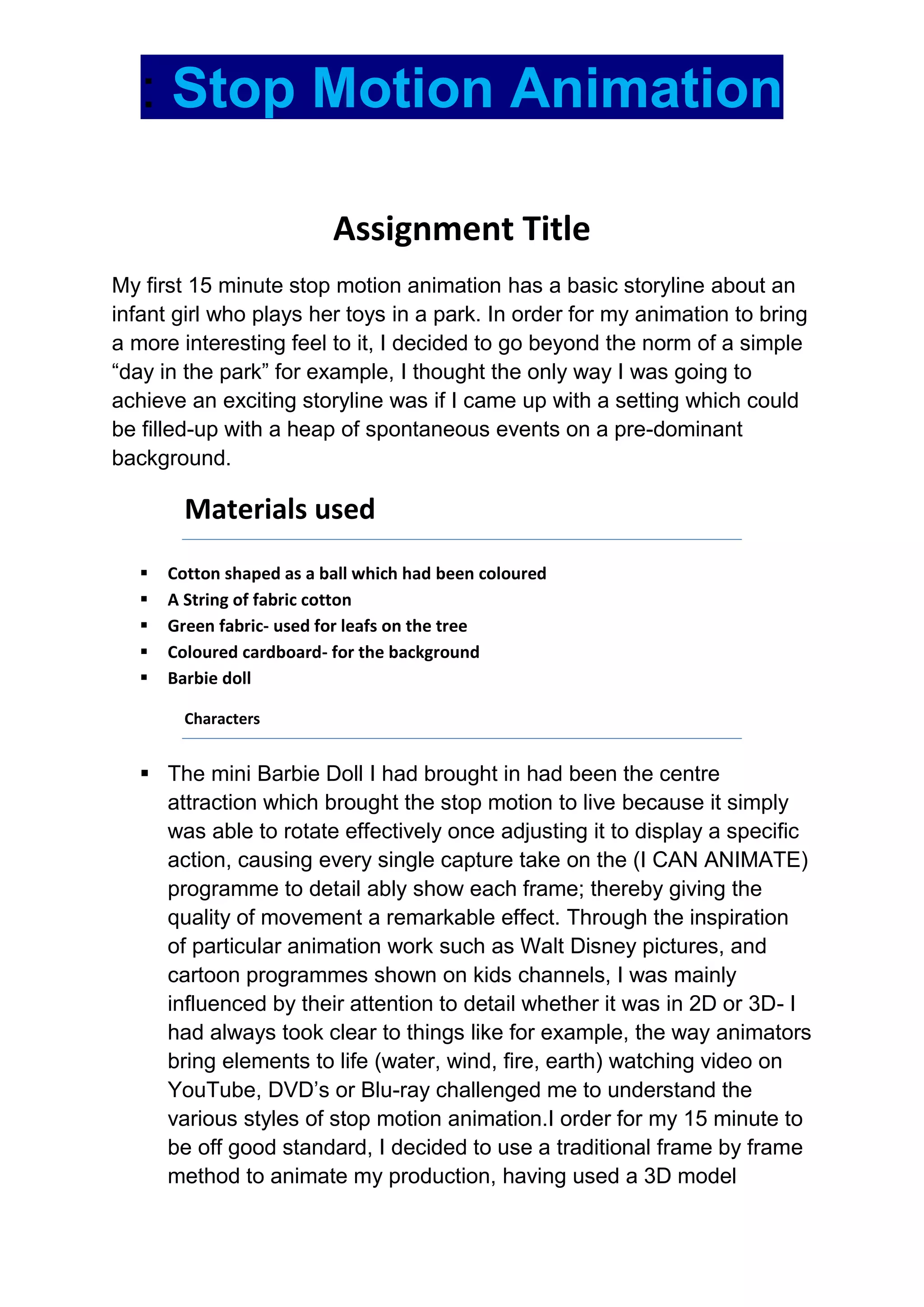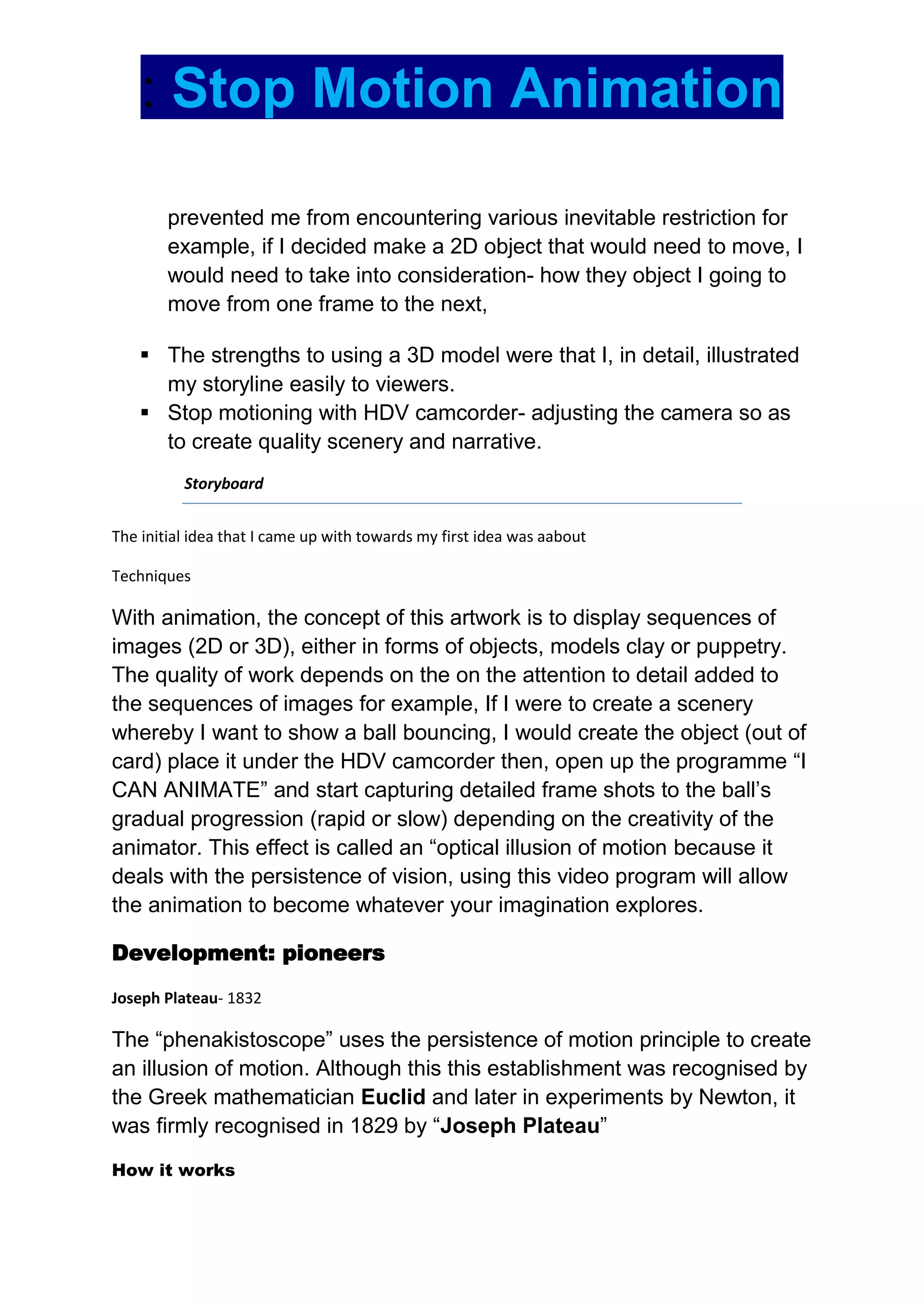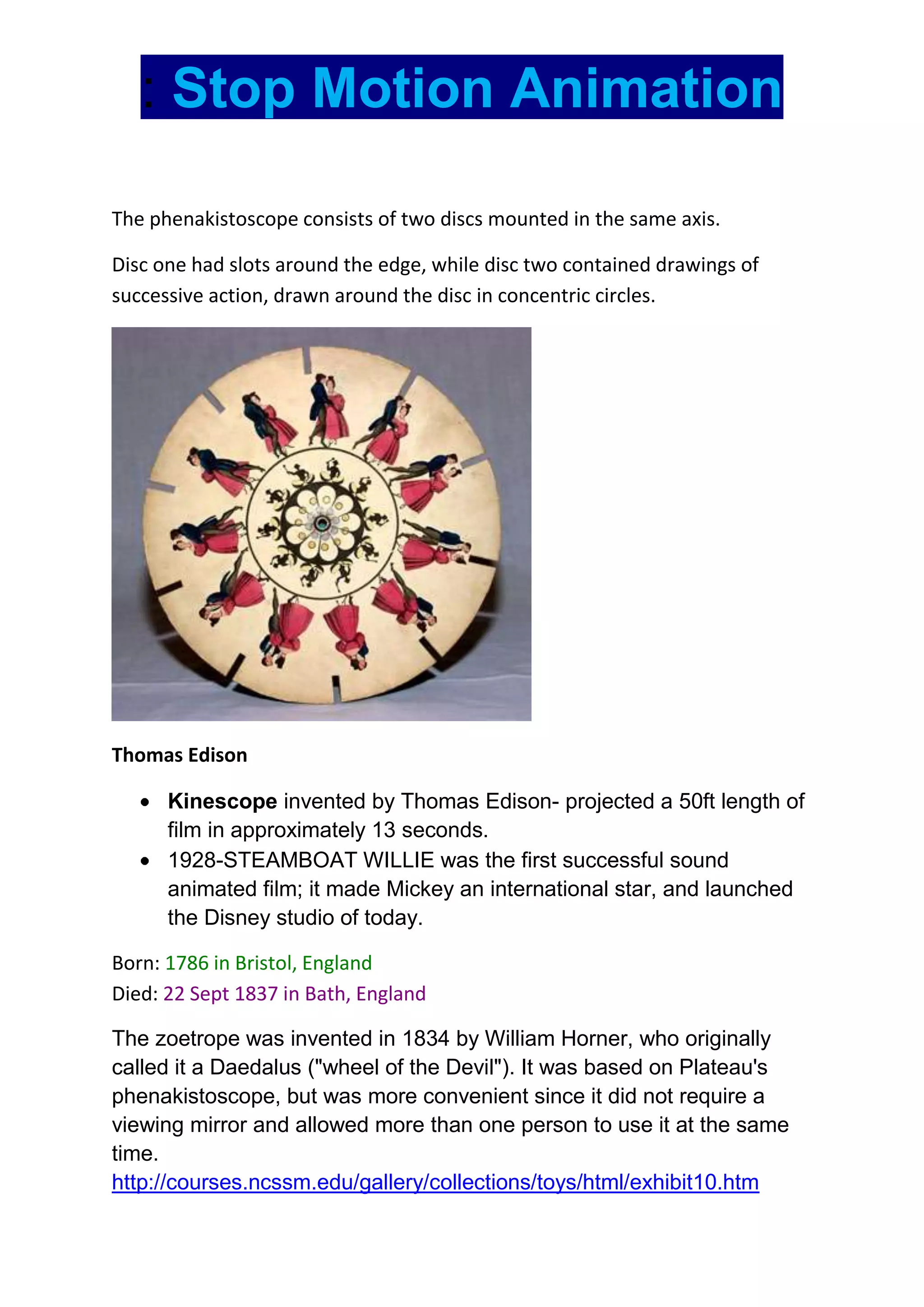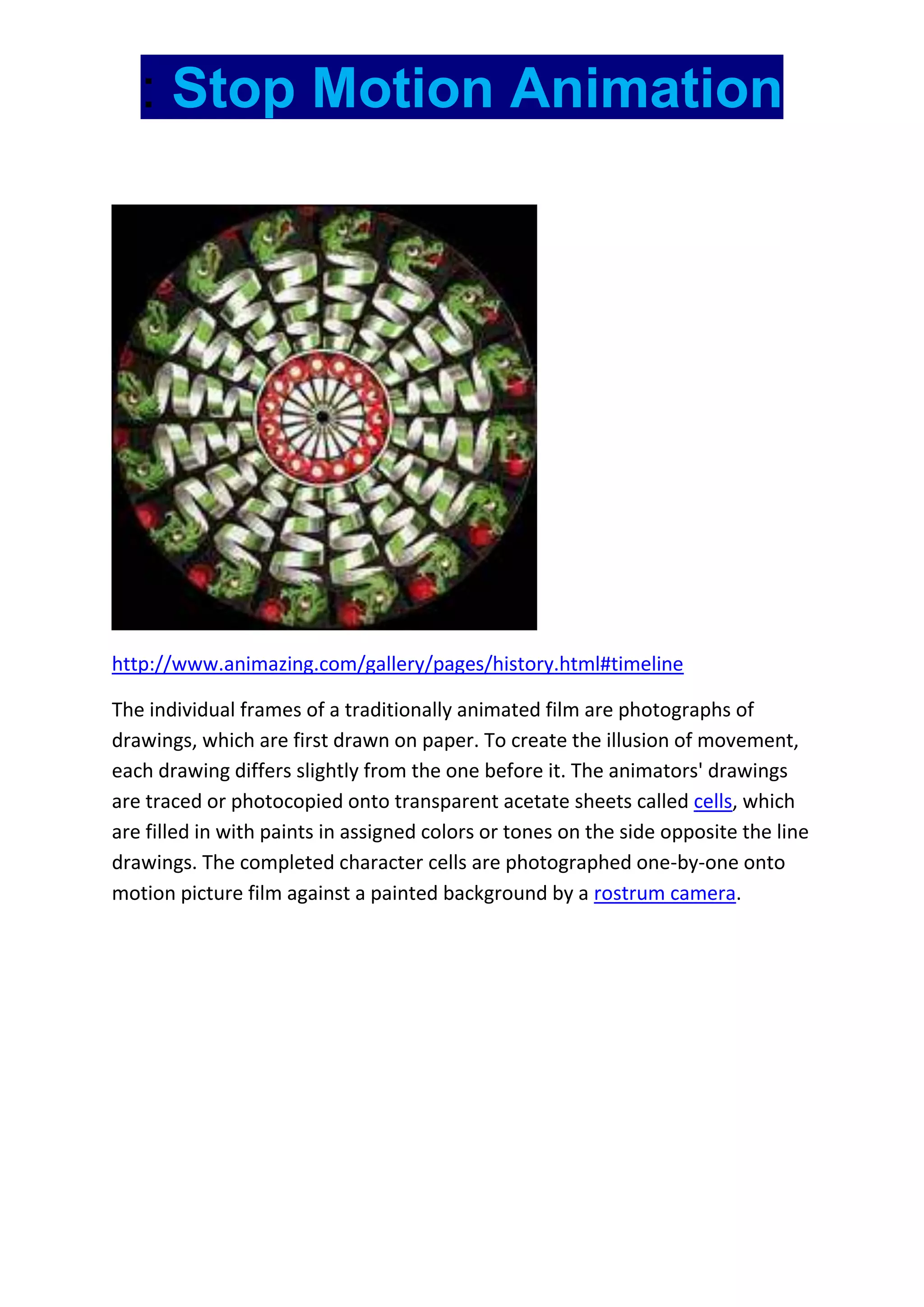The document discusses the history and techniques of stop motion animation. It describes an assignment to create a 15 minute stop motion animation depicting a girl playing with toys in the park. To make the story more interesting, events were added with settings that could accommodate spontaneous occurrences. Materials used included cotton, fabric, cardboard, and a Barbie doll. The animation was created using traditional frame-by-frame techniques to illustrate the storyline and bring the 3D model characters to life. Pioneers of early animation techniques included Joseph Plateau with the phenakistoscope in 1832 and William Horner with the zoetrope in 1834.



![: Stop Motion Animation
Horner made other mathematical contributions, however,
publishing a series of papers on transforming and solving algebraic
equations, and he also applied similar techniques to functional
equations. It is also worth noting that he gave a solution to what
has come to be known as the "butterfly problem" which appeared
in The Gentleman's Diary for 1815 [4]. The problem is the
following:-](https://image.slidesharecdn.com/assignmenttitlefirstanimation-120123104237-phpapp02/75/Assignment-title-first-animation-4-2048.jpg)
